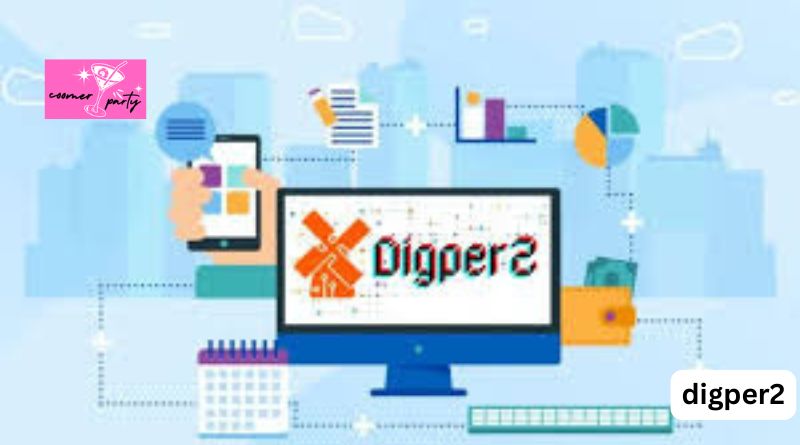Introduction: What Is digper2 and Why Does It Matter?
In the ever-evolving digital ecosystem, businesses and developers are constantly in search of tools that can offer comprehensive solutions for managing data, performance, and automation. One such tool that has recently emerged as a frontrunner in this space is digper2. Though still a relatively new entrant in the world of digital performance technologies, digper2 is already being recognized for its innovative features and robust architecture. Designed to unify disparate digital performance tools under one umbrella, digper2 addresses a critical need in industries ranging from software-as-a-service (SaaS) to digital marketing, e-commerce, and enterprise data management. This article explores what digper2 is, its features, advantages, real-world applications, and how it’s transforming digital operations.
The Evolution and Purpose Behind digper2
The inception of digper2 was not accidental but born from a need to address inefficiencies in the digital monitoring and automation landscape. Traditional systems were often fragmented—requiring users to rely on multiple platforms to analyze data, monitor KPIs, automate processes, and manage digital assets. This fragmentation led to poor workflow integration, data silos, and missed insights. Recognizing this gap, the creators of digper2 envisioned a singular, modular platform capable of integrating performance analytics, automation workflows, real-time monitoring, and predictive intelligence.
Developed by a collaborative team of engineers and data scientists in 2024, digper2 aimed to consolidate functionalities into a customizable and extensible system. With venture capital backing and an open-source core, the tool quickly evolved from a prototype into a scalable SaaS platform. Now, as of 2025, digper2 is considered one of the most promising new platforms for integrated digital performance management.
Key Features That Define digper2
1. Centralized Analytics Dashboard
The central feature of digper2 is its dynamic analytics hub. Unlike conventional analytics tools that focus on siloed data sources, digper2 aggregates inputs from websites, mobile apps, databases, third-party APIs, IoT devices, and more. This centralized view allows organizations to cross-reference user behavior with technical performance, enabling a more comprehensive understanding of what’s driving—or hindering—business results.
2. Real-Time Monitoring and Instant Alerts
With digital environments operating 24/7, downtime or performance lags can result in serious revenue loss. digper2 addresses this with real-time monitoring capabilities that track system metrics and user engagement simultaneously. The platform can send immediate alerts via Slack, SMS, or email based on pre-set thresholds, ensuring that potential issues are identified and mitigated swiftly.
3. Low-Code/No-Code Automation Builder
For non-developers, the automation builder in digper2 is a game-changer. This drag-and-drop interface allows users to create if-this-then-that logic for handling performance issues, marketing triggers, or data syncs. Whether you’re automating the publication of a blog post based on traffic trends or adjusting ad bids in real time, digper2 provides the toolkit to do so without deep coding skills.
4. Built-in Predictive Analytics and AI Models
Where most platforms stop at analysis, digper2 goes further by embedding machine learning capabilities. Users can train models to predict churn, forecast traffic spikes, detect anomalies in server performance, or analyze customer lifetime value. These models are integrated natively into the system, meaning there’s no need for external ML platforms.
5. Extensibility Through APIs and SDKs
Another powerful aspect of digper2 is its developer support. With SDKs in Python, JavaScript, and other major languages, developers can embed digper2’s functionalities directly into their applications or custom dashboards. Its RESTful API structure ensures seamless integration with CRM tools, CMS platforms, email marketing software, and cloud infrastructure.
Advantages of Using digper2 for Your Business
The versatility of digper2 means it offers a wide range of benefits that cater to multiple industries. One of its most appreciated advantages is the reduction in tech stack complexity. Companies that previously relied on five or six different platforms for analytics, automation, and monitoring can now consolidate those efforts into one system—digper2. This not only cuts down subscription and maintenance costs but also makes team collaboration easier and more effective.
Furthermore, digper2 enhances operational efficiency by automating routine tasks, detecting anomalies before they become issues, and giving decision-makers a real-time view of their digital landscape. Its no-code automation builder allows marketing and operations teams to build powerful workflows without depending on IT departments. This democratization of automation empowers departments to act faster and with greater autonomy.
Another significant benefit is the predictive capability built into digper2. Rather than reacting to historical data, teams can now make decisions based on future trends modeled through AI—such as customer behavior forecasts, seasonal demand predictions, or server load projections. For businesses competing in dynamic markets, this foresight is invaluable.
Real-World Applications of digper2
1. E-Commerce Optimization
E-commerce businesses use digper2 to monitor site traffic, track product page performance, and receive instant alerts when conversion rates drop. For example, if a sudden dip in transactions occurs, digper2 can automatically pause digital ad campaigns to avoid wasting budget, while simultaneously alerting the sales and tech teams.
2. Marketing Campaign Automation
Marketing departments leverage digper2’s automation builder to streamline digital ad management. Campaigns can be adjusted in real time based on ROAS (return on ad spend), click-through rates, or engagement metrics. Digper2 can even integrate with ad platforms like Google Ads and Meta to pause underperforming campaigns automatically and reallocate budget based on predictive models.
3. DevOps and Application Monitoring
Tech companies use digper2 to monitor application health metrics like latency, server uptime, and database query performance. It can trigger alerts or restart services automatically if a critical threshold is met, reducing downtime and preserving user experience. Integration with CI/CD pipelines allows continuous deployment adjustments based on real-time system performance.
4. Content Publishing and SEO
Media companies and content marketers use digper2 to track article performance in real time, including pageviews, dwell time, bounce rate, and keyword rankings. Automated triggers can push high-performing content to social channels or flag underperforming posts for optimization, all without manual intervention.
Comparing digper2 to Competitors
When placed alongside competitors like Google Analytics 4, Adobe Analytics, Mixpanel, and Segment, digper2 stands out in several key areas. Its modular and customizable architecture allows organizations to use only the features they need. Unlike GA4, which primarily focuses on web traffic, digper2 integrates deeply across performance, automation, and prediction.
In contrast to tools like Mixpanel that emphasize user event tracking, digper2 offers full-scale workflow automation and predictive analytics, making it more suited for enterprise-scale operations. Its open ecosystem and strong developer tools also allow for greater flexibility, making it an ideal choice for organizations that prioritize customization and scalability.
Future Outlook: What’s Next for digper2?
As of 2025, digper2 continues to evolve rapidly, with planned updates including deeper integrations with cloud-native services like AWS Lambda, Google Cloud Functions, and Azure Monitor. The company behind digper2 is also exploring blockchain integration for data verification and further enhancements to its AI modeling engine, potentially enabling natural language querying and voice-based analytics access.
Community-driven development is another direction that makes digper2 especially exciting. With a growing base of open-source contributors, the platform’s plugin library and use-case templates are expanding monthly, meaning businesses will find more tailored solutions out of the box.
Conclusion: Why digper2 Deserves Your Attention
Whether you’re managing an e-commerce website, overseeing a digital marketing campaign, or operating a SaaS product at scale, digper2 provides a unified platform to monitor, automate, and optimize digital performance like never before. Its strength lies in combining analytics, real-time response, automation, and AI-powered forecasting—all in a single, extensible tool. With its low learning curve, powerful developer support, and cross-functional appeal, digper2 is not just another tool in the digital toolbox—it’s a transformational platform redefining what digital performance means in 2025 and beyond.
If your organization is seeking clarity, efficiency, and foresight in your digital operations, it’s time to take a serious look at digper2.

